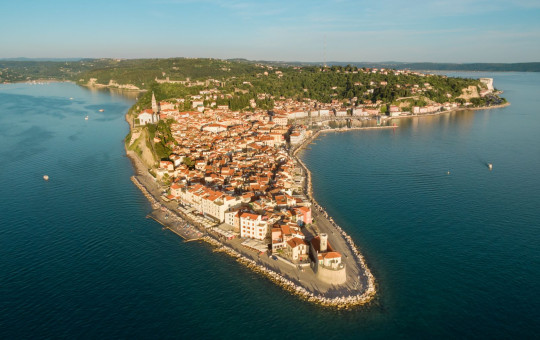Date: 18. January 2024
Time to read: 2 min
Slovenians enjoy clean drinking water. Our nature inspires and gives us a sense of joy, inspiration and life. According to official data, there are more than 1,270 artificial and natural lakes and ponds in Slovenia. The largest proportion of these includes ponds, pools, puddles, salt pans, oxbow lakes, lakes, recreational swimming pools and water reservoirs.
Although hiking, skiing and jogging are very popular among Slovenians, we also enjoy ice-skating with children in the wintertime. Many ice-skating rinks can be found in urban areas, sports halls, town squares, shopping centres and elsewhere.
But the most beautiful ice-skating venues are those found among trees, fields, hidden away from the roads where it is possible to fill our lungs with fresh air when skating on natural ice surfaces. These are often not very smooth and even, but make up for it by being inspiring.
The most popular natural ice-skating locations in Slovenia
The most popular natural ice-skating locations in Slovenia include the Koseze Pond, Lake Rakitna, Lake Podpeč, Lake Cerknica, Lake Bloke, Pond Lokev in Logatec, Lake Bled, Lake Bohinj, Lake Jasna in Kranjska Gora, Lake Planšar in Jezersko, and Lake Braslovče in the Štajerska region.
Among the most spectacular ones is certainly the glacial Lake Bohinj, which offers fantastic views of the Julian Alps. This is the only mountain lake where ice-skating is still permitted. Lake Jasna in Kranjska Gora is one of the lakes that freezes the fastest. It is also possible to ice-skate on the small intermittent Lake Ledine below the village of Rateče at the entrance to the Planica Valley, which is one of the lakes in the broader area of the Zelenci Nature Reserve. It boasts a backdrop of two majestic mountain peaks, Mt Razor and Mt Prisank, and is truly a lake of unique mountain reflections. When it's cold enough and when Lake Bled is frozen and the sun is shining, it is difficult to imagine a more magnificent sight than to see adults and children gliding over the ice.
Lake Cerknica is one of the most interesting Slovenian lakes and it is also one of the largest intermittent lakes in Europe. Every year, nature gives it a new shape with its unique brush, making it even more magical. When you cut a groove with an ice skate into its deep-frozen surface, it seems like you are touching a supernatural and elusive world that you can feel but cannot truly get to know.
Lake Planšar in Zgornje Jezersko, which is an artificial accumulation lake, is in the shape of a heart. The lake is surrounded by idyllic spruce forest and steep rock faces of surrounding peaks which you can admire from the lake. Lake Ledava in the Goričko Nature Park is also an artificial accumulation lake. When skating on the lake, you can hear the scops owl and the little owl, which is a sign that the habitat in the Goričko Hills is still pristine, as they are seldom heard in other parts of Slovenia. The mysterious karst Wild Lake (Divje jezero) near Idrija is considered a gem of Slovenia’s natural heritage.
Lake Bloke is situated in the village of Volčje on the Bloke Plateau, the cradle of skiing in Slovenia and Central Europe. A major attraction of this lake is the stunning wooden sculptures made by the local artist Janez Hiti, which are found on the lake and in the nearby park. On the lake, you can skate between two wooden bears, one standing on skis and the other one fishing. Lake Braslovče, which lies in the embrace of trees, was created by damming the Trebnik Stream.
Snežnik Castle is certainly an epitome of a snowy winter fairy-tale, drawing visitors to its frozen meadow that serves as a natural ice-skating rink in winter. The accumulation Lake Pernica is particularly attractive in the morning when covered by mysterious mists with soft rolling hills in the background. The Koseze Pond is situated on the western side of the Šiška Hill in Ljubljana at the site of a former clay pit. Lake Podpeč in the Ljubljana Marshes is special because it is almost completely round and it is also one of the deepest lakes in Slovenia, with one part extending down as much as 51 metres.
-
 Ice skating is prohibited at Lake Krn. Photo: Teddy Veneull/www.slovenia.info
Ice skating is prohibited at Lake Krn. Photo: Teddy Veneull/www.slovenia.info
-
 Nowadays, ice skates are of different colours and modern designs, but they were once made of wood and called rake, having a front curved wedge. Some people also used iron ice skates that were attached to their shoes with screws. Photo: Art Svetlana/depositphotos.com
Nowadays, ice skates are of different colours and modern designs, but they were once made of wood and called rake, having a front curved wedge. Some people also used iron ice skates that were attached to their shoes with screws. Photo: Art Svetlana/depositphotos.com
Suitable ice surfaces
Ice-skating is prohibited on the lakes in the Triglav Lakes Valley, Lake Duplje, Lake Lužnica, Lake Krn, Lake in Planina pri Jezeru and Lakes Križ.
Ice-skating is permitted on other lakes in Slovenia, but attention must be paid to the thickness of ice. Local residents are the best source of information. Falling into the water is not the only risk, frostbite may also occur, so bring warm clothes and hot tea with you. Good advice for those who wish to go ice-skating is to skate in a group and not move too far from the group.











